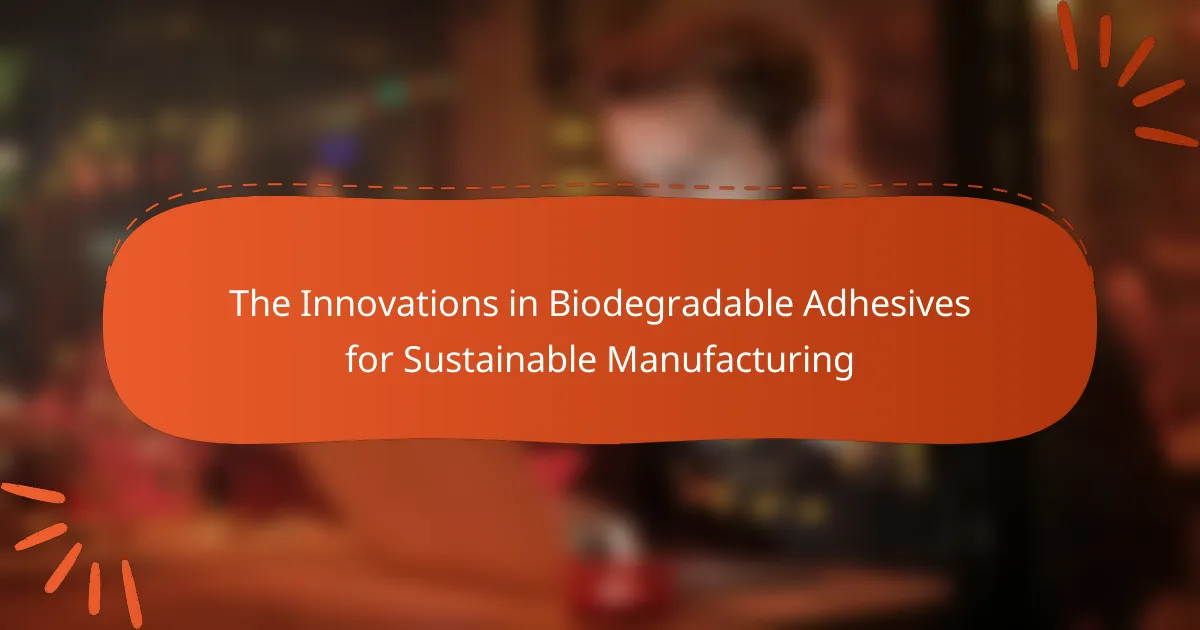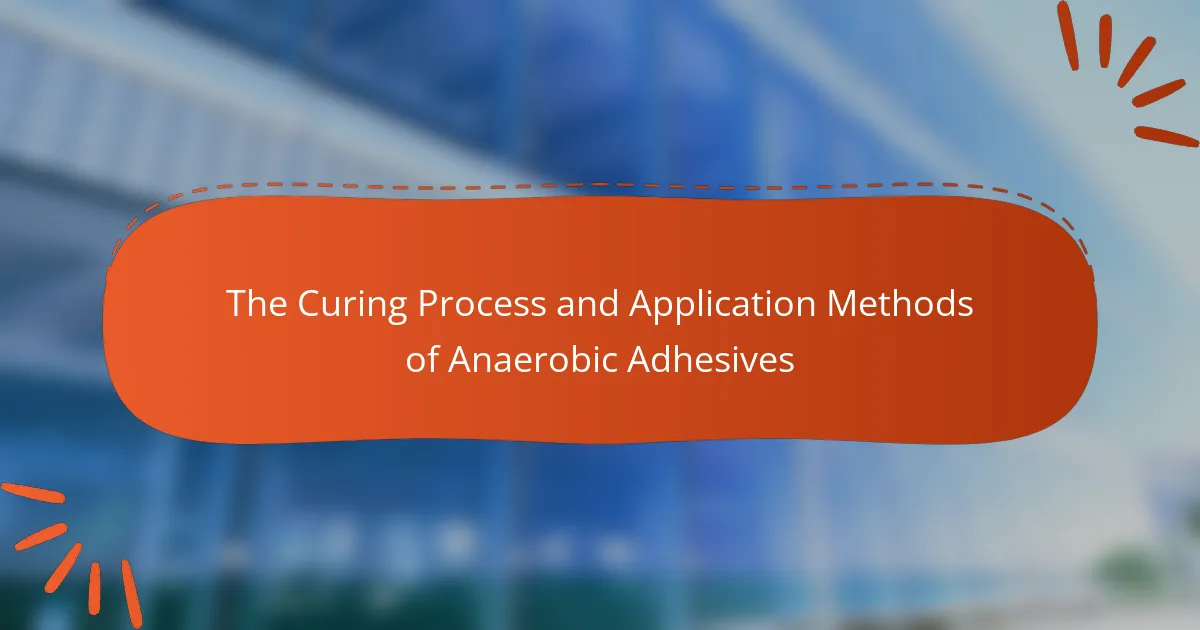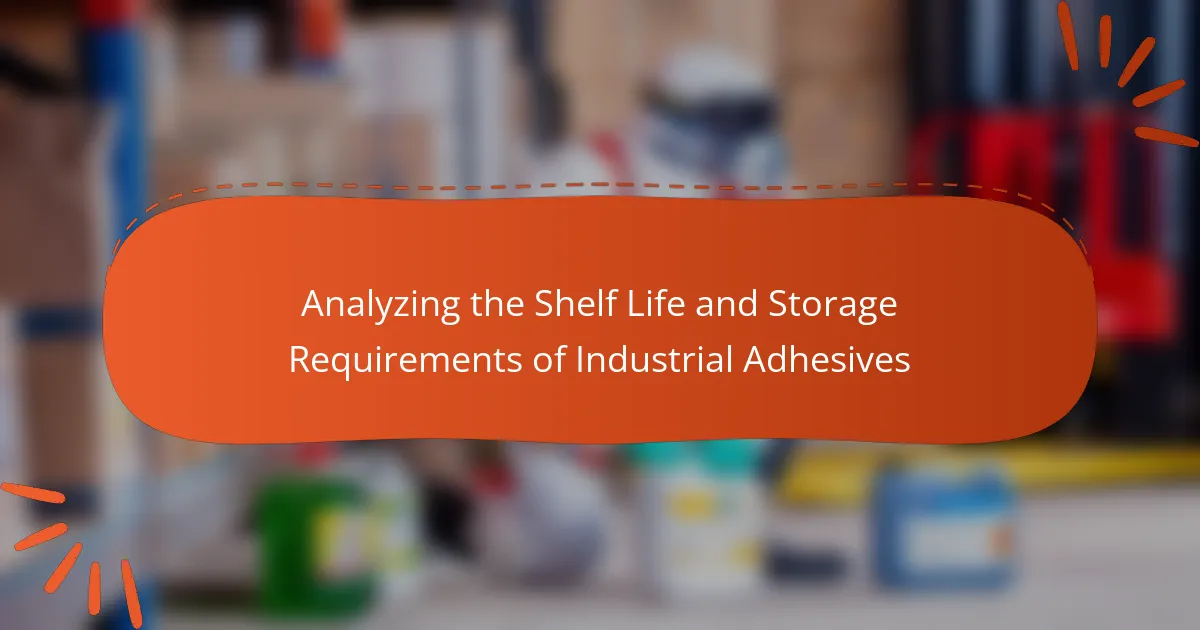Contact adhesives are a type of adhesive that bonds surfaces upon contact, making them ideal for various applications due to their strong initial tack and ability to bond dissimilar materials such as wood, metal, plastic, and fabric. Their use spans multiple industries, including furniture manufacturing, automotive assembly, and construction, where they provide durable bonds that resist heat and moisture. Understanding substrate compatibility is essential for achieving effective bonding, as different adhesives work best with specific materials and may require surface preparation. Best practices for using contact adhesives include proper surface preparation, even application, and adherence to curing times, ensuring optimal performance and strong adhesion.

What are Contact Adhesives and Their Applications?
Contact adhesives are a type of adhesive that bonds on contact when two surfaces are pressed together. They are commonly used in various applications due to their strong initial tack and ability to bond dissimilar materials. Contact adhesives can bond materials like wood, metal, plastic, and fabric. They are often used in industries such as furniture manufacturing, automotive assembly, and construction. These adhesives provide a durable bond that can withstand heat and moisture. Their quick bonding capability allows for efficient production processes. Many contact adhesives are available in both solvent-based and water-based formulations. This versatility makes them suitable for a wide range of projects and materials.
How do Contact Adhesives differ from other adhesives?
Contact adhesives differ from other adhesives primarily in their application method and bonding process. They require both surfaces to be coated and allowed to dry before being pressed together. This creates an immediate bond upon contact, unlike many adhesives that require curing time. Additionally, contact adhesives offer high initial tack and are effective on a variety of substrates, including porous and non-porous materials. This versatility allows them to bond materials such as rubber, plastic, and wood effectively. In contrast, other adhesives may not perform as well across such diverse surfaces. The unique application method and strong bonding capability make contact adhesives distinct in the adhesive market.
What are the key properties of Contact Adhesives?
Contact adhesives are known for their strong bonding capabilities. They create an instant bond upon contact, which allows for immediate handling of materials. These adhesives are typically resistant to water and heat, making them suitable for various environments. They adhere well to a wide range of substrates, including wood, metal, and plastic. The flexibility of the bond accommodates movement between surfaces. Contact adhesives also have a long shelf life when stored properly. Their application is often straightforward, requiring minimal tools. The quick setting time enhances efficiency in projects.
What are the common uses of Contact Adhesives in various industries?
Contact adhesives are widely used across various industries for bonding materials. In the construction industry, they bond flooring, wall panels, and countertops. In the automotive sector, contact adhesives are used for attaching trim, headliners, and insulation. The furniture industry utilizes them for laminating surfaces and assembling components. In the footwear industry, contact adhesives bond leather, rubber, and synthetic materials. Additionally, they are employed in the manufacturing of electronics for securing components and assemblies. These applications highlight the versatility and effectiveness of contact adhesives in achieving strong, durable bonds across multiple substrates.
What makes Contact Adhesives versatile?
Contact adhesives are versatile due to their ability to bond a wide range of materials. They can effectively adhere to surfaces like wood, metal, plastic, and fabric. This adaptability is a result of their unique formulation, which allows for strong initial tack and flexibility. Contact adhesives cure quickly, providing immediate handling strength. They also maintain their bond under varying temperature and humidity conditions. This makes them suitable for both indoor and outdoor applications. Their ease of use further contributes to their versatility, as they can be applied with brushes, rollers, or spray systems.
How do different formulations affect the versatility of Contact Adhesives?
Different formulations of contact adhesives significantly influence their versatility. Variations in chemical composition, such as solvent-based versus water-based formulations, affect adhesion strength and substrate compatibility. Solvent-based adhesives typically offer stronger bonds and better performance on non-porous surfaces. Water-based formulations are more environmentally friendly and easier to clean up, making them suitable for indoor applications.
Additionally, formulations with different additives can enhance specific properties. For instance, rubber-based adhesives provide flexibility, while acrylic-based options offer UV resistance. These characteristics allow contact adhesives to be tailored for various applications, from woodworking to automotive assembly.
Research has shown that the choice of formulation directly impacts the adhesive’s performance under different environmental conditions. A study published in the Journal of Adhesion Science and Technology highlighted how specific formulations maintain bond strength in varying temperatures and humidity levels. This illustrates the importance of selecting the right formulation for intended use.
What types of surfaces can Contact Adhesives bond effectively?
Contact adhesives can effectively bond a variety of surfaces. These include wood, metal, plastic, rubber, and leather. They are particularly useful for porous and non-porous materials. Contact adhesives create a strong bond upon contact, making them ideal for applications requiring immediate adhesion. Their versatility allows them to be used in construction, automotive, and crafting industries. The bonding strength is often enhanced by the surface preparation, such as cleaning and roughening. This ensures better adhesion and durability.

What is Substrate Compatibility in Contact Adhesives?
Substrate compatibility in contact adhesives refers to the ability of an adhesive to bond effectively with various materials. This compatibility is crucial for ensuring strong, durable bonds. Different adhesives have specific substrates they work best with, such as wood, metal, or plastic. The adhesive’s chemical composition influences its interaction with these materials. For example, some adhesives may require surface preparation for optimal bonding. Testing for substrate compatibility can prevent failures in applications. Manufacturers often provide guidelines on which substrates are suitable for their products. Understanding this compatibility helps in selecting the right adhesive for specific projects.
Why is substrate compatibility important for adhesive performance?
Substrate compatibility is crucial for adhesive performance because it directly influences bond strength and durability. When an adhesive is applied to a compatible substrate, it forms a stronger chemical and mechanical bond. This bond ensures that the adhesive can withstand environmental factors such as temperature changes and moisture exposure. For example, adhesives designed for porous materials perform poorly on non-porous surfaces. Studies show that mismatched substrates can lead to adhesive failure, resulting in delamination or peeling. Therefore, selecting the right adhesive for the specific substrate is essential for optimal performance.
What factors influence substrate compatibility in Contact Adhesives?
Substrate compatibility in contact adhesives is influenced by several factors. These include the chemical composition of the adhesive and the substrate material. Surface energy of the substrate plays a significant role in adhesion. Higher surface energy typically results in better adhesion. The presence of contaminants on the substrate can hinder adhesion. Moisture levels in the substrate also affect compatibility. Temperature during application impacts the curing process of the adhesive. Finally, the mechanical properties of both the adhesive and substrate are crucial for compatibility.
How does surface preparation affect adhesion quality?
Surface preparation significantly affects adhesion quality. Properly prepared surfaces enhance the bond between adhesive and substrate. Clean surfaces remove contaminants that can inhibit adhesion. Roughening surfaces increases the surface area for better mechanical interlocking. The type of surface preparation method, such as sanding or chemical cleaning, also impacts adhesion. Research shows that surfaces prepared with appropriate methods can improve adhesion strength by up to 50%. Inconsistent surface preparation can lead to weak bonds and premature failure. Therefore, effective surface preparation is crucial for achieving optimal adhesion quality in contact adhesives.
What are the challenges of substrate compatibility?
Substrate compatibility challenges arise when different materials do not bond effectively. Variations in surface energy can hinder adhesion. Porous substrates may absorb adhesives, reducing bond strength. Contaminants like dust or oil can interfere with adhesion as well. Temperature fluctuations can cause materials to expand or contract differently, leading to bond failure. Different chemical compositions can react adversely, weakening the bond. Each of these factors complicates the effective use of contact adhesives across diverse substrates.
How can mismatched substrates impact adhesive performance?
Mismatched substrates can significantly impair adhesive performance. When two substrates have different physical or chemical properties, the adhesive bond may weaken. For example, variations in surface energy can lead to poor wetting of the adhesive. This results in a reduced contact area, diminishing bond strength. Additionally, mismatched thermal expansion rates may cause stress at the interface during temperature changes. This stress can lead to delamination or failure of the bond. Research indicates that adhesive performance is optimized when substrates are compatible. The Journal of Adhesion Science and Technology highlights the importance of substrate matching for effective adhesion.
What strategies can be employed to improve compatibility?
To improve compatibility of contact adhesives, select adhesives designed for specific substrates. Using the right adhesive type enhances bonding strength. Conduct surface preparation to ensure optimal adhesion. Cleaning surfaces removes contaminants that hinder bonding. Apply adhesives uniformly to avoid weak spots. Testing adhesive on sample materials can predict performance. Consider environmental factors, such as temperature and humidity, during application. Following manufacturer guidelines ensures proper usage and maximizes compatibility.

What are the Best Practices for Using Contact Adhesives?
The best practices for using contact adhesives include proper surface preparation, even application, and appropriate curing time. Surfaces should be clean, dry, and free of contaminants. This ensures maximum adhesion. Apply the adhesive evenly using a brush or roller. This prevents weak spots. Allow the adhesive to cure as per manufacturer instructions. Most require a specific open time for effective bonding. Press surfaces together firmly after application. This enhances adhesion strength. Use in well-ventilated areas to avoid inhaling fumes. Following these practices results in optimal performance of contact adhesives.
How can users ensure optimal adhesion with Contact Adhesives?
Users can ensure optimal adhesion with contact adhesives by following specific preparation and application techniques. First, surfaces must be clean, dry, and free of contaminants. This helps the adhesive bond effectively. Second, users should apply the adhesive evenly to both surfaces. An even application prevents weak spots in the bond. Third, allowing the adhesive to become tacky before joining surfaces enhances adhesion. This is typically a few minutes, depending on the product. Fourth, applying firm pressure while joining the surfaces ensures a strong bond. Lastly, allowing adequate curing time is crucial for maximum strength. Generally, full strength is achieved after 24 hours.
What are the recommended application techniques for Contact Adhesives?
The recommended application techniques for contact adhesives include brush application, roller application, and spray application. Brush application allows for precise control and is effective for small areas. Roller application is suitable for larger surfaces and provides an even coat. Spray application is ideal for achieving a thin, uniform layer over extensive areas. Each technique requires the adhesive to be applied to both surfaces for optimal bonding. Additionally, it is essential to allow the adhesive to become tacky before joining the surfaces. This ensures a stronger bond. Proper ventilation is crucial during application to avoid inhalation of fumes.
How should users handle and store Contact Adhesives for best results?
Users should handle and store contact adhesives in a cool, dry place. This prevents degradation and maintains effectiveness. Always keep the adhesive containers tightly sealed when not in use. Exposure to air can lead to premature drying. Use gloves to avoid skin contact during application. This reduces the risk of irritation. Store adhesives away from direct sunlight and heat sources. High temperatures can alter the adhesive’s properties. Follow the manufacturer’s instructions for specific storage guidelines. Proper handling and storage extend the shelf life of contact adhesives.
What common troubleshooting tips exist for Contact Adhesives?
Common troubleshooting tips for contact adhesives include ensuring proper surface preparation. Clean surfaces are essential for effective adhesion. Remove dust, grease, and moisture from both surfaces before application. Apply adhesive evenly to achieve a strong bond. Avoid excessive application, as it can lead to weak spots. Allow adequate drying time before joining surfaces. Follow the manufacturer’s instructions for optimal results. If adhesion issues persist, consider using a different adhesive type suited for the materials involved.
How can users identify and resolve adhesion failures?
Users can identify adhesion failures by inspecting for visible gaps, delamination, or peeling at the bond line. They should also assess the surface for contamination or improper preparation, which are common causes of failure. Testing the bond strength with a peel test can provide quantitative data on adhesion quality.
To resolve adhesion failures, users must clean the surfaces thoroughly to remove contaminants. They should then reapply the adhesive according to the manufacturer’s instructions, ensuring proper curing conditions. If necessary, users can switch to a more suitable adhesive for the materials involved. Proper surface preparation and application techniques are essential for achieving optimal adhesion.
What maintenance practices can prolong the effectiveness of Contact Adhesives?
Proper storage, application techniques, and regular inspections can prolong the effectiveness of contact adhesives. Store contact adhesives in a cool, dry place away from direct sunlight. Ensure the lid is tightly sealed to prevent evaporation. Apply adhesives in recommended thickness for optimal bonding. Use appropriate tools to avoid contamination. Regularly inspect bonded surfaces for signs of wear or damage. Address any issues immediately to maintain bond integrity. Following these practices can significantly enhance the longevity and performance of contact adhesives.
Contact adhesives are versatile bonding agents that create strong bonds upon contact, making them suitable for various materials including wood, metal, plastic, and fabric. This article explores the unique properties of contact adhesives, their applications across industries such as construction and automotive, and the importance of substrate compatibility for effective adhesion. Key factors influencing bonding performance, including surface preparation and adhesive formulation, are also discussed, along with best practices for application and troubleshooting common issues. Understanding these aspects is essential for maximizing the effectiveness and longevity of contact adhesives in diverse projects.



